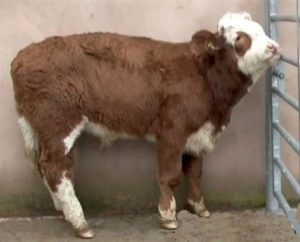Sweating – A Sign Of Major Problems
20 December 2017
Just like humans, sweating is a major way cattle try to control their body temperature and avoid overheating. As hot air rises the visual signs in cattle are damp/wet patches along their backs and in particular over their shoulders.
However sweat itself does not cool the animal, being secreted from the body at body temperature. For sweat to cool an animal it has to evaporate the sweat, a process which requires a lot of energy/heat to turn liquid sweat into a vapour. (This is the same principle as used to cool fridges, deep freezes, etc).
When damp patches of sweat appear on the shoulders of cattle it means they are producing more sweat than they can evaporate off to cool themselves. As a consequence their body temperature starts to rise and they sweat more so just become even wetter.
The speed of evaporation is entirely dependent on the relative humidity of the air around the animals skin. The higher the relative humidity the slower sweat is evaporated. This is why humans sweat so much in hot, muggy weather while at even higher temperatures in a desert, sweat evaporates instantaneously.
When housed cattle start sweating they gradually make the problem worse – the sweat which is evaporated increases the relative humidity of the surrounding air, reduces the rate of evaporation so animals sweat more. Dark patches of sweat over the shoulders of housed cattle is a clear indicator they are struggling to avoid overheating, putting them under increasing stress and impairing their immuno response so they become increasingly susceptible to disease and in particular pneumonia.
At the first signs of sweating it is essential to allow cattle free access to an outdoor area. Producers who have done this have been amazed at the response of their stock which spend nearly all of their time out of doors even, in what to us, are quite adverse weather conditions.
In an outdoors environment/well ventilated shed the movement of air continually replaces the damp air around the animal with drier less humid air. This speeds up the rate the sweat evaporates cooling the animal more rapidly. Clipping the backs of cattle has a similar effect, allowing the atmosphere to immediately remove the humid air away from the skin. Left unclipped, the thick dense winter coat means any sweat evaporated off the skin condenses into minute droplets by the time it has reached the long guard hairs on the outside of the coat which then becomes wet. This is the same as a steaming kettle produces droplets of condensation when it hits the cooler kitchen window.
Why Don’t Cattle Sweat At Grass?
Cattle never appear to sweat at grass even when temperatures are much higher. Yet by choice grazing cattle will normally lie in the open in direct sunlight. However their favourite “sun bathing” spot is normally the area which receives the most breeze. The combination of continually moving hot, dry air and their short summer coats allows the sweat they produce to immediately evaporate and cool the skin and for the more moist air to immediately be blown away. As a result cattle don’t pant but sheep do as their thick fleece effectively stops any sweat on their skin from evaporating into the surrounding air. As a consequence sheep do pant and seek shade in hot weather.
Basil Lowman, SAC Consulting Beef Specialist
Related Materials
Sign up to the FAS newsletter
Receive updates on news, events and publications from Scotland’s Farm Advisory Service
